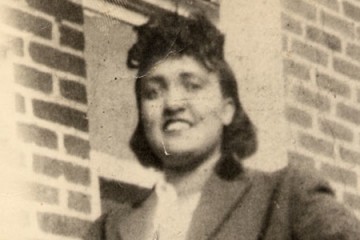- Name
- Johns Hopkins Medicine media relations
- JHMedia@jhmi.edu
- Office phone
- 410-955-6681
Johns Hopkins University and Johns Hopkins Medicine unveiled the initial design plans earlier this week for the on-campus building project named in honor of Henrietta Lacks, the Baltimore County woman whose cells have advanced medicine around the world.
The plans were presented during an Urban Design and Architecture Advisory Panel meeting for Baltimore City Planning on Thursday.
This marks an important milestone in the building project, for which design work will continue through the end of the year.
"The architectural design of the building to be named for Henrietta Lacks reflects Johns Hopkins' commitment to proudly honor and celebrate Mrs. Lacks' extraordinary legacy on our campus," Johns Hopkins University President Ron Daniels said. "We are excited to share these plans with the city's design and architecture advisory panel, and we look forward to continuing to work closely with the Baltimore community and the family of Henrietta Lacks as this important project moves forward."
The new, approximately 34,000-square-foot building in East Baltimore will adjoin Deering Hall, a historic structure that is home to the Berman Institute of Bioethics. Located at the corner of Ashland and Rutland avenues, in the heart of Baltimore's Eager Park community, the building will support multidisciplinary and complementary programs of the Berman Institute and the Johns Hopkins University School of Medicine, and other university divisions. It will include flexible program and classroom space to support education and research, and meeting space will also be made available for community use.
"It is exciting to know what the building named in honor of my grandmother, Henrietta Lacks, will look like from the outside captivating her legacy. I'm happy to see it presented to the Baltimore community," said Jeri Lacks Whye, granddaughter of Henrietta Lacks and member of the Henrietta Lacks Building Advisory Committee. "The design reflects not only her strong and beautiful spirit but her important role she plays in the history, and future, of East Baltimore."
Added Jeffrey Kahn, director of the Berman Institute: "This important building will significantly expand our capacity for teaching, scholarship and community-building, inspiring efforts to address inequities in biomedical research and health care that are an additional tribute to its remarkable namesake,"
Construction is planned to start next year. Johns Hopkins also announced that the building will be completed in 2025, with an opening celebration to be planned. Updates on the building's progress will be available online.
Victor Vines, president of Vines Architecture, and Robert Thomas, director of design at Vines Architecture, said they look forward to sharing more of the design and building's progress.
"The expression of this building is unique to its surroundings, as Henrietta Lacks was a unique African American human being in this world. Our team has worked to design a building that fits within the urban context but has a special identity that we hope people believe warrants carrying the name of Henrietta Lacks," Vines and Thomas said in a statement. "As we continue progress on the design, we believe that this building will remain a critical way to share the story of Henrietta Lacks for generations to come."
Lacks was a 31-year-old African American mother of five from Baltimore County who sought treatment at The Johns Hopkins Hospital in the early 1950s. Doctors diagnosed her with cervical cancer and, as medical records show, she received care that included the best medical treatment available at the time for this terrible disease. Unfortunately, treatment was unsuccessful, and Lacks passed away in October 1951.
A sample of Lacks' cancer cells was retrieved during a biopsy and sent to cancer researcher George Gey's nearby tissue lab, where he had been collecting cells from patients who came to Johns Hopkins Hospital with cervical cancer. He discovered these cells were unlike any of the others he had seen: Where other cells would die, Lacks' cells survived, and the number of cells would double every 20 to 24 hours. Soon after that, he began sharing the cells, at no cost, with researchers around the world. Deemed "HeLa" cells, the cell line that began from the biopsy from Lacks proved to be remarkably durable and prolific, and while many additional cell lines are in use today, HeLa cells have had a unique contribution to untold medical breakthroughs over the decades since their discovery.
In 2013, Johns Hopkins worked with members of the Lacks family and the National Institutes of Health, NIH, to help craft an agreement that requires scientists to receive permission to use Henrietta Lacks' genetic blueprint in NIH-funded research.
The NIH committee tasked with overseeing the use of HeLa cells now includes two members of the Lacks family. The biomedical research community has also made significant strides in updating research practices for the donation and use of tissue from patients, in part thanks to the lessons learned from Henrietta Lacks' story.
To learn more about Henrietta Lacks and the wide-ranging impact of HeLa cells on medical research, visit the Henrietta Lacks page on the Johns Hopkins School of Medicine website.
Posted in University News
Tagged community, henrietta lacks










